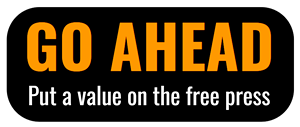While fitness fads come and go, many mind-body practices are rooted in traditions that are hundreds, sometimes thousands, of years old. Yoga, from India, is the best-known. Qi gong (pronounced chee gung), from China, is another.
For Meggan Baumgartner of Moscow, exploring qi gong came as a package deal while studying to become a licensed acupuncturist at the Oregon College of Oriental Medicine in Portland, Ore. Besides diet, herbs and acupuncture, Chinese medicine uses practices like tai chi and qi gong to treat or prevent health problems.
Baumgartner, 43, owns Healing Point in Moscow and is a certified teacher with the Ling Gui International Healing Qigong School. The school’s teachings are based on forms passed through the family of Dr. Liu Dong and his sister Liu He for generations. Baumgartner talked to Inland 360 about the practice, which is sometimes called Chinese yoga and translates to “energy work.”
How do you explain what qi gong is to people?
Baumgartner: Qi gong is a large umbrella term that contains many different movements, breathing techniques and mindfulness meditation practices for focusing the mind and intention on certain aspects within the body. Tai chi is technically a type of qi gong. Different families have different forms that may focus on different aspects of health. Other forms are more generalized and may be for overall health. Some forms are done standing, you might move around physically. Others are seated and you might be focused on a mental or breathing process. Qi gong is pretty broad.
What is qi?
Baumgartner: In Western medicine, energy is talked about in terms of what causes the heart to beat in a certain rhythm or how brain activity works. In Eastern medicine, we talk about energy, or qi, or what I would call vital life force. It’s not just for the heart or brain; there are channels or meridians where this qi flows through our whole body, and it correlates to some degree with blood flow, lymph, nerve conduction and chemical and hormonal communication. It’s a force unseen that still has a lot of power. I compare it to wind; we can’t see wind, but we can see the effects of wind. We can’t see qi, but we can feel the effects of it moving or not moving. Qi gong helps us connect with that qi flow in our own bodies to help regulate it.
What do you consider to be the benefits of qi gong?
Baumgartner: I think one of the main benefits that most people experience, even if they’re beginners, is more awareness of their own body system in terms of tension and areas that may move easily or not, as well as any emotional components and where they might be held in the body in certain ways. Another thing that seems very accessible through qi gong, I would say, is mindfulness practice. You focus on one thing and one thing at a time. You really can’t be worrying or making a to-do list if you’re focusing on one thing at a time. It’s a tool for stress management in our busy Western culture.
One of the qi gong forms you teach is called Eight Treasures. Could you explain it?
The Eight Treasures qi gong form is one of the oldest and most widely known forms in Asia. It was developed for monks sitting in meditation for long periods of time; they would get stiff and sore from sitting. The form opens up and stretches the body and the tendons and increases circulation. It also deals with processing and moving the emotional states so that we don’t get kind of stuck in one of them. It’s a standing form with a combination of some movements, some chanting or sound, and some specific breath work.
Can this form be done by anyone?
Anyone who can stand comfortably, who hasn’t had a recent surgery or injury that would prohibit them from standing comfortably. They way I’ve been taught, and the way I teach, is that even with physical limitations you can learn a form and do it in a way that is comfortable for your body at any given time. If you can’t do a section to full extent, you can imagine doing it. In imagining, the brain connects to the body parts in the same way as if you were actually moving, so you get the same benefits.
IF YOU GO WHAT: Eight Treasures Qigong class WHEN: 5:30 to 6:30 p.m., Tuesdays and Thursdays, Feb. 8 to 22 WHERE: Uma Center, large activity room, 414 S. Jefferson St., Moscow COST: $75 OF NOTE: Registration is due by Feb. 5 and is available by calling Baumgartner at (208) 669-2287 or emailing mb@healingpt.com. Registration forms are available online at www.healingpt.com.
In the Lewiston-Clarkston Valley, information about qi gong classes is available by contacting Karen Young at karenyounglac@gmail.com or (208) 883-8894. Young is a licensed acupuncturist and has been practicing tai chi and qi gong for more than 30 years.




















